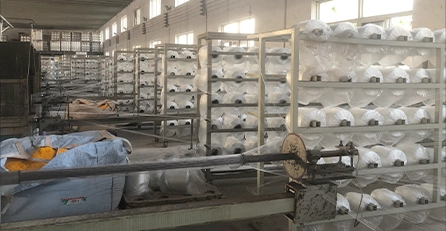vacuum hose
Understanding Vacuum Hoses Functions, Types, and Maintenance
Vacuum hoses are integral components used in various systems, from automotive engines to industrial applications. They play a crucial role in facilitating the movement of air, gases, and fluids, ensuring that systems operate efficiently and effectively. In this article, we will delve into the functions of vacuum hoses, the different types available, and essential maintenance tips to prolong their lifespan.
What Are Vacuum Hoses?
Vacuum hoses are flexible tubes designed to transport air or fluids under vacuum or atmospheric pressure. Their primary function is to create a sealed environment that can either draw in air or exhaust gases, which is essential for many systems, especially in automotive applications. These hoses are typically made from rubber, silicone, or plastic materials, chosen for their resistance to the environmental conditions they will encounter.
Functions of Vacuum Hoses
1. Air Management In automotive applications, vacuum hoses manage air flow in the engine. They help in regulating the intake of air, ensuring that the right air-to-fuel mixture is achieved for efficient combustion.
2. Emissions Control Vacuum hoses are essential for the operation of emissions control systems, such as the Positive Crankcase Ventilation (PCV) system. They assist in recirculating gases that would otherwise escape into the atmosphere, helping to reduce pollution.
3. Actuation of Components Many pneumatic systems rely on vacuum hoses to actuate various components. For instance, they control brake boosters, throttle mechanisms, and other devices that require vacuum pressure to operate effectively.
4. Fluid Transfer In industrial settings, vacuum hoses are used for transferring fluids. They are essential in processes such as suction discharge in manufacturing plants or the safe transport of chemicals in chemical processing facilities.
Types of Vacuum Hoses
The choice of vacuum hose depends on the specific application
. Here are some common types- Rubber Vacuum Hoses These are commonly used in automotive applications due to their flexibility and resilience. They can withstand various temperatures and pressures but may degrade over time when exposed to oil and heat.
vacuum hose

- Silicone Vacuum Hoses Silicone hoses are increasingly popular in performance vehicles due to their ability to withstand higher temperatures. They are often used in environments where durability and performance are critical.
- Plastic Vacuum Hoses Lightweight and resistant to corrosion, plastic hoses are suitable for lower pressure applications. They are commonly used in various industrial settings.
Maintenance of Vacuum Hoses
To ensure the optimal performance of vacuum hoses, regular maintenance is crucial. Here are some tips
1. Routine Inspections Regularly check vacuum hoses for signs of wear, such as cracks, brittleness, or loose connections. Early detection can prevent larger issues down the line.
2. Cleanliness Keep the hoses and surrounding areas clean to prevent debris from entering the system. Dust and grime can cause blockages or damage to the hoses.
3. Proper Installation Ensure that vacuum hoses are correctly installed with appropriate fittings. Loose connections can lead to vacuum leaks, which diminish system efficiency.
4. Replacement If you identify any signs of wear or damage, replace the vacuum hoses promptly. Waiting too long can cause more extensive damage to the system, leading to costly repairs.
5. Temperature Considerations Be mindful of the operating temperatures of vacuum hoses. Each type of hose material has its temperature limits; exceeding these can lead to hose failure.
Conclusion
Vacuum hoses are versatile components vital to the functionality of many systems. Their roles in air management, emissions control, and fluid transfer make them invaluable in both automotive and industrial applications. Understanding the different types available and proper maintenance practices can enhance the performance and longevity of vacuum hoses, ensuring that your systems run smoothly and efficiently. Regular attention to these components is essential in preventing issues and maintaining optimal operation, whether in a car’s engine or an industrial machine.
-
Top Quality Oxy Acetylene Hoses for Sale Fit for Welding DemandsNewsJul.28,2025
-
The Future of Pneumatic Air Tubes in IndustryNewsJul.28,2025
-
Superior and Reliable LPG Hose Pipe Solutions for Every NeedNewsJul.28,2025
-
Exceptionally Durable and Versatile Premium Braided PVC TubingNewsJul.28,2025
-
Best Adapters for Connecting Garden Hose to PVC Pipe ConnectionsNewsJul.28,2025
-
The Essential Role of LPG Hoses in Safe and Efficient Gas DistributionNewsJul.16,2025














